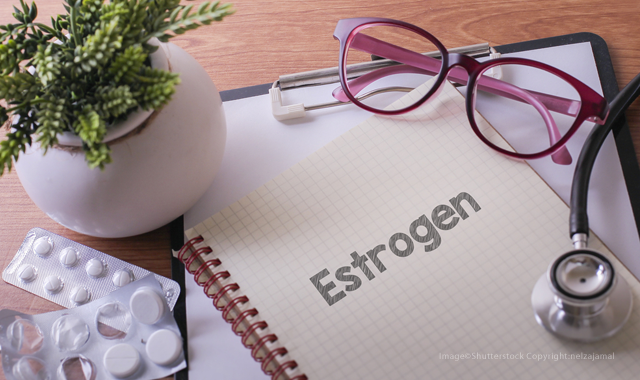Can estrogen therapy lead to healthier teeth and gums?
A new study finds links between estrogen therapy and reducing tooth and gum diseases in postmenopausal women.

Estrogen therapy is known to help women manage a variety of menopause-related issues: improving bone density and heart health and reducing hot flashes, to name a few. As such, many women choose to take hormones to treat the numerous symptoms associated with menopause.
According to the National Institute on Aging, during the menopausal transition the ovaries begin to work less and less well, causing the production of hormones like estrogen and progesterone to decline over time. Hormone therapy is designed to steady the levels of estrogen and progesterone in the body, which can help with symptoms like hot flashes and mood swings.
Hormone replacement therapy may involve estrogen-only treatment, estrogen plus progesterone or estrogen plus progestin. Women who have had a hysterectomy are generally prescribed estrogen alone, according to the National Cancer Institute, while women who have not had the surgery are typically prescribed estrogen plus progestin. The U.S. Food and Drug Administration has approved numerous hormone products for use in menopausal hormone therapy.
Now, a new study suggests that estrogen therapy may also lead to healthier teeth and gums.
According to the study, which was published online in “Menopause,” estrogen levels begin to fall during menopause, leading women to become more vulnerable to health issues. For instance, the loss of bone mineral density can result in osteoporosis. At the same time, women’s teeth and gums also become more susceptible to disease, which can result in pain, bleeding, inflammation, and even loose or missing teeth.
This isn’t the first time that hormones have been linked to periodontal health. A retrospective study done last year by Texas A&M University Baylor College of Dentistry researchers indicated that lack of testosterone in rhesus macaque monkeys resulted in periodontal disease and other oral problems. The study was viewed as unique because while the link between estrogen, oral health and the temporomandibular joint is well known, the correlation between male sex hormones and oral health is not as widely publicized.
The cross-sectional estrogen study examined 492 postmenopausal Brazilian women who were between the ages of 50 and 87. One hundred thirteen women were in osteoporosis treatment while 379 were not treated. The treatment consisted of systemic estrogen alone or estrogen plus progestin, as well as calcium and vitamin D supplements, for a minimum of six months.
The women were evaluated to determine whether the osteoporosis treatment could help to increase the bone mineral density in their jaws and improve their overall oral health.
Trending research: Limiting dental benefits increases hospital visits
The results of the study found that the rate of occurrence of severe periodontitis was 44 percent lower in the postmenopausal osteoporosis-treatment group than in the untreated group. Women receiving treatment exhibited less periodontal probing depth, less clinical attachment loss and less gingival bleeding than women not receiving treatment. The researchers concluded the results suggest that women treated with estrogen for postmenopausal osteoporosis have a lower prevalence of severe periodontitis than women not receiving treatment.
“Osteoporosis can occur throughout the body, including the jaw, and lead to an increased risk of periodontal disease,” says Dr. JoAnn Pinkerton, executive director of The North American Menopause Society. “This study demonstrates that estrogen therapy, which has proven to be effective in preventing bone loss, may also prevent the worsening of tooth and gum disease. All women, but especially those with low estrogen or on bisphosphonate treatment for osteoporosis, should make good dental care a part of their healthy lifestyles.”
The study, titled “Association between osteoporosis treatment and severe periodontitis in postmenopausal women,” was published online in “Menopause,” the journal of The North American Menopause Society.
Floss & Flip-Flops Episode 11: Diabetes Health Month
November 15th 2022Diabetes is a global disparity and most notably impacts those who are diagnosed as well as those with pre-diabetes or undiagnosed diabetes. Let’s discuss how to become better patient advocates in the screening, management and maintenance of diabetic cases.
University of Texas Health Science Center San Antonio to Launch Center for Regenerative Sciences
June 17th 2024The center aims to translate preclinical discoveries into therapies for dental and craniofacial diseases, leveraging the school’s expertise in stem cell-based treatments and 3D printing technologies.